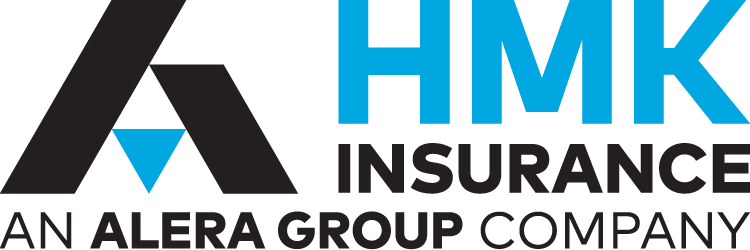 You show up to work like any normal day, and things are going as scheduled. Your employees just broke from their daily toolbox talk and are starting to go about their duties. However, today is not a normal day as an OSHA Compliance Officer has just showed up to your jobsite or facility. What do we do now? Should all panic break loose and we hide from this officer and hope he goes away? This is the worst thing to happen to your company, right? That is not the case, as below we will explore how the OSHA inspection works and how you should go about handling it to protect your company and employees.
You show up to work like any normal day, and things are going as scheduled. Your employees just broke from their daily toolbox talk and are starting to go about their duties. However, today is not a normal day as an OSHA Compliance Officer has just showed up to your jobsite or facility. What do we do now? Should all panic break loose and we hide from this officer and hope he goes away? This is the worst thing to happen to your company, right? That is not the case, as below we will explore how the OSHA inspection works and how you should go about handling it to protect your company and employees.
OSHA stands for the Occupational Safety and Health Administration and is part of the Federal Government. Here in Pennsylvania, we fall under all federal OSHA standard requirements. There are some states in the country that have state mandated programs which are more stringent and go above and beyond federal OSHA standards. Here is PA, all public and private businesses fall under OSHA regulations, while state and municipal townships do not.
When an OSHA Compliance Officer comes knocking on your door, you can usually expect them to come during normal working hours (9am-5pm). Upon arrival, they are required to present their credentials to you. That can be presented in either a business card or a badge, as they are law enforcement employees under the federal government. One of the most common questions asked is, “Can I refuse and tell OSHA I do not want them in my building or on my jobsite today?” Absolutely, you can. However, when they come back, they are going to come back with a warrant and possibly a law enforcement officer. In their minds, you are refusing their entry and trying to hide hazards you have in your facility or on your jobsite. I would NEVER suggest to any client to refuse OSHA access to your site. You can ask them to sit and wait while you gather your management team/safety professional or HMK Risk Management Consultant.
Upon arrival, the inspection will begin with an opening conference. This is when they disclose why they are there for an inspection. The inspector could be at your business because they noticed an imminent danger driving by your site and stopped to fix the situation. The visit could be a follow up to an employee complaint. Another possibility is that the visit is a programmed inspection looking into specific industries or companies that use equipment that pose the hazards for specific injuries (i.e., amputations and fall hazards). They are going to speak with you about the hazards that they are there to address and will ask to see your safety manual and OSHA 300 injury logs.
Some complaints from employees can be specific. For example, if a maintenance employee submits a complaint saying there are machine guard hazards and exposed electrical components in the maintenance shop, you are not required to take the OSHA Compliance Officer through your entire facility to get to the maintenance shop. You may walk them around the outside of the building and bring them through the back maintenance door. If you allow OSHA to walk through the facility, the officer can address any other OSHA citable offences or hazards they see. Be aware they may speak with employees and ask employees to sit down individually to question them on various safety related items. You are not allowed to be in the interview with them. Additionally, be sure to walk with the compliance officer and take the same pictures as the compliance officer to have digital evidence of the conditions the compliance officer is looking into.
Once the walk through is completed, you will sit with the compliance officer in a closing conference to discuss their findings and any potential alleged violations. At that time, the compliance officer is not going to be able to tell you what citations you will receive or how much fines could potentially cost. Once the compliance officer takes their information back to the regional director to review, you will potentially receive the citations.
If OSHA does end up issuing your company a citation(s), you will receive that via certified mail. You have three (3) days to post those citations to be made public for all employees to see. Under the citation there will be space for you to fill in what has been done to abate the posted issue.
If you do receive an OSHA Citation, there are different levels of severity to those citations:
- Serious: Deemed to exist in the place of employment if there is a substantial probability that death or serious physical harm could result. $12,000 maximum penalty
- Non-serious: Situations where the accident or illness that would be most likely to result from a hazardous condition would probably not cause death or serious physical harm. May have monetary value.
- Willful: When evidence shows either an intentional violation of the act or plain indifference to its requirements. $120,000 maximum penalty.
- Criminal-Willful: The employer willfully violates any standard which causes death to an employee and is found guilty.
- Repeat: The employer has been cited previously for a substantially similar condition.
- Failure to Abate: The employer has not corrected a previously cited violation which has become a final order. $12,000 per day maximum penalty.
Following the issue of a citation to your business, requesting an informal conference with the assistance of an HMK Risk Management Consultant is highly recommended. When speaking with the regional director in informal conference, we show you have corrected as many of the hazards as possible and/or in the process of correcting them. This results in the potential opportunity to agree to a financial reduction in the citation penalties. You will sign-off on that agreement and set up payment terms. With good faith efforts, you could see a reduction of up to 50%.
In the event you are not satisfied with the reduction, or think the citation was unjust, you have the ability to contest in the court of law. You must have a written contestment in a certain timeframe, hire a lawyer, then go to court to fight the penalty.
Implementing OSHA guidance into your workplace should be an everyday practice. In doing so, having an OSHA Compliance Officer knock on your door should not be a scary matter by any means. Never go through the process alone, make sure to contact your Risk Management Consultant for guidance and assistance.

Ryan Anton, GSP, ASHM
Risk Management Consultant





